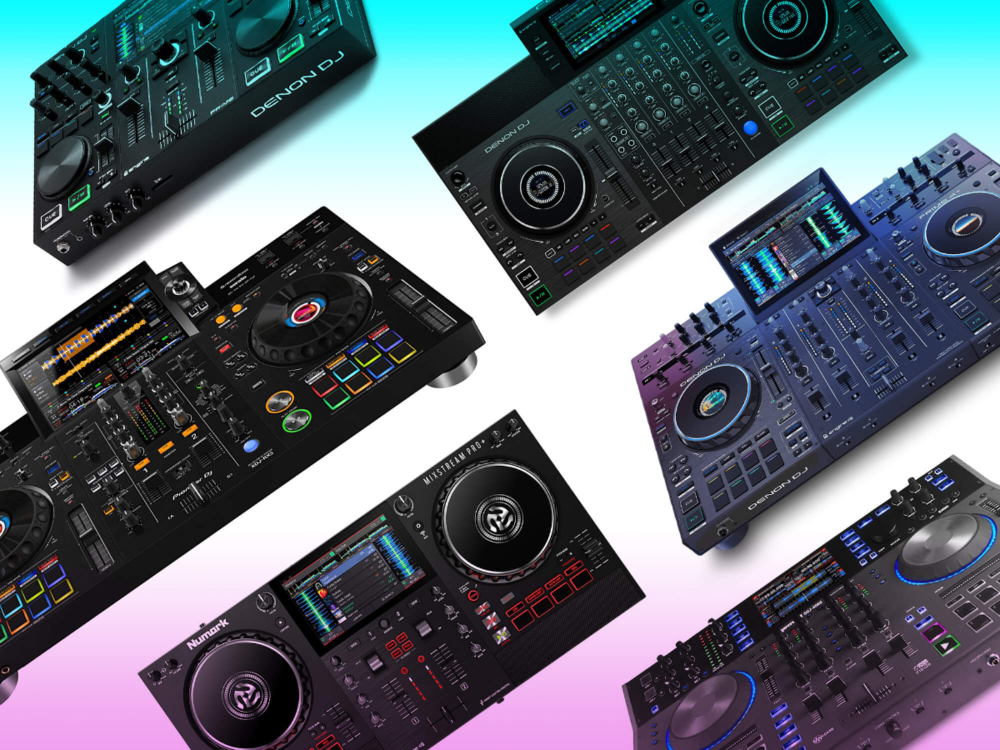Search the Community
Showing results for tags 'ableton live'.
-
Want to create music like Armin van Buuren and Ruben de Ronde? This guide offers insights into achieving a similar sound. While demonstrated in Ableton Live, the techniques are applicable to other DAWs like FL Studio and Logic Pro X, allowing you to produce trance and house music inspired by artists like Armin van Buuren, Dim3nsion, and others. You can download this Ableton project for free here https://cme.sh/3loQls
-
- armin van buuren
- ruben de ronde
-
(and 3 more)
Tagged with:
-
Here is a list of useful links for the best DJ gear, controllers & software 2025 5 Best Pro DJ Controllers Best beginner DJ controllers 2025 Best DJ Controllers 2024 Best DJ controllers 2024: Hands-on control for Serato, rekordbox, Traktor and more - our expert picks Best DJ Gear 2024: 11 best DJ software for mixing and playlisting in 2024 Best DJ plugins of 2024: Free software and apps for DJing Best DJ Software - Top 5 Choices for Digital DJing 2024 Best Pioneer DJ Gear 2024 The best DJ controllers in 2024 The Ultimate Guide to the Best DJ Setups in 2024 for any Budget! 2023 Best DJ Gear 2023: 9 of the best DJ Controllers under $400 Best DJ Gear 2023: 8 of the best Standalone DJ Controllers in 2023 The 10 best DJ software available in 2023 Please reply to this topic if you find any other useful links, we'll keep this list updated
- 2 replies
-
- dj controllers
- dj software
- (and 20 more)
-
ableton live Ableton Live 12.1 Now In Public Beta
Synthtopia posted a topic in Music Production Forum
Ableton Live 12.1 is now in public beta. This free update for Ableton’s music performance and production software comes with significant additions and improvements to all editions of Live, including Live Lite, plus Push.… Read More Ableton Live 12.1 Now In Public BetaView the full article -
Abletunes released Analog Drums, a free virtual drum rack for Ableton Live. Analog Drums is an Ableton Live native release compatible with all editions of Ableton Live 11 or newer, including Intro, Standard and Suite. Abletunes states, “Analog Drums sets a new standard for drum racks, delivering a complete analog-style drum machine experience right inside [...] View post: Abletunes Analog Drums is a FREE Virtual Drum Rack for Ableton Live View the full article
-
- abletunes
- abletunes analog drums
-
(and 3 more)
Tagged with:
-
About Ableton has officially released Live 12, the latest update to its popular DAW https://www.ableton.com/en/live/ Whats New UI Improvements Improved layout Filter based on tags in Live’s Browser Improved Workflow New Devices Meld (Synth) Granulator III (Sampler) Roar (Saturation Effect) New MIDI Tools Reshape MIDI patterns Generate new ideas Join, split & chop notes Stay in key across devices Additional Features Uncover new textures Performance Pack Lost and Found Pricing Live 12 Intro - £69 Essentials – 16 tracks and 5+ GB of sounds Live 12 Standard - £259 Full features – 38+ GB of sounds and more instruments and effects Live 12 Suite - £539 Complete studio – 71+ GB of sounds, Max for Live and all instruments and effects YouTube
-
Ableton has officially released Live 12, the latest update to its popular DAW ...
-
After teasing its release last fall, Ableton has released the new Ableton Live 12 software – available for purchase on the company’s website and downloadable via your Ableton account if you’ve pre-ordered the program. The company has also published a series of how-to videos, to get to know the program’s major feature updates and additions. It’s […] The post Ableton Live 12 is here: new Performance Packs, sounds, MIDI tools + a refreshed workflow and more appeared first on DJ TechTools. View the full article
-
Ableton Live has consistently set the bar for what a digital audio workstation (DAW) can do, offering a blend of powerful music creation and performance features. With the release of Ableton Live 12, the excitement in the music production community is palpable – but is it really worth it? This latest version introduces a host of new features designed to enhance workflow, creativity, and performance. Here’s a look at the 12 most exciting features of Ableton Live 12 that are stirring the most buzz... The post Ableton Live 12: Yes or No? appeared first on EDM Tips. View the full article
-
- ableton live 12
- ableton
-
(and 1 more)
Tagged with:
-
Learn how to make MELODIC TECHNO in the style of artists such as Miss Monique, Artbat and Anyma. This step-by-step music production guide shows you how to produce one of the most popular current genres in electronic dance music. You can also download this project file to open in Ableton Live, so you can follow along and really understand the techniques being shared... The post How to Make Melodic Techno (like Miss Monique, Artbat & Anyma) appeared first on EDM Tips. View the full article
-
DJ software can have a plethora of uses. It can help you manage and analyse your collection of digital music files, or simply let you mix tracks, set cue points, and add effects, providing tools for seamless beatmatching, looping, and live performance. Some software is designed to be used standalone – perfect for portable parties or practising at home. Some apps, like Tribe XR, even let you DJ in virtual reality. Other professional software is designed to complement an existing hardware setup if you have one, offering advanced features unavailable on physical gear... The post The 10 best DJ software available in 2023 appeared first on MusicTech. View the full article
-
If your music lacks dynamics, movement, life and generally excitement or if you get stuck in an eight-bar loop and don’t know how to finish your track, this is for you! Ableton automation (or automation in any DAW), is one tool that every single professional music producer knows how to get the most from. Make sure to read to the end because the real power comes when you apply all of these techniques together... The post Amazing Ableton Automation Tricks PRO Producers ACTUALLY Use appeared first on EDM Tips. View the full article
-
Learn how to make Melodic House (in the style of Eli & Fur) in this Ableton Live House Music tutorial. If you’ve ever wondered how to make deep melodic house music in the style of Eli & Fur, this step-by-step tutorial will give you an insight into how to achieve similar results. This isn’t only a tutorial on how to make Melodic House in Ableton Live, though…you can use the same methods in FL Studio or Logic Pro, to produce your own house music in the style of Eli & Fur. Let’s do this!… The post How to Make MELODIC HOUSE (Like Eli & Fur) – FREE Ableton Project & Samples! appeared first on EDM Tips. View the full article
-
- house
- ableton live
-
(and 4 more)
Tagged with:
-
Hold onto your hi-hats, producer friends: Ableton has announced the release of their latest flagship software, Ableton Live 11, slated for release in early 2020. And from what we’ve seen thus far, it’s a massive update that adds some long-awaited features, as well as offers more tools for creative expression. Let’s take a look at […] The post Ableton Live 11 is coming, and with it major updates appeared first on DJ TechTools. View the full article
-
- ableton
- ableton live
-
(and 2 more)
Tagged with:




